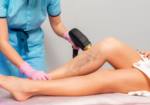How to take care of my toothbrush?
Your toothbrush plays a fundamental role in maintaining good oral hygiene by removing deposited plaque on your teeth. However, to maintain its efficacy and keep it free from unwanted bacteria, you must take proper care of your toothbrush. Let’s have a look at some easy yet effective ways to take care of your toothbrush and guarantee yourself good dental health.
7 essential tips for taking care of your toothbrush, as suggested by cosmetic dentistry in Waikiki, Honolulu:
- Rinse thoroughly after use: After brushing your teeth, you must rinse your toothbrush properly with water to eliminate any residual toothpaste or food particles. After cleaning, keep the toothbrush in an upright position after shaking off excess water. Don’t rush for covering the toothbrush with a cap or container immediately after use, as this can create a damp environment that encourages bacterial growth.
- Store your toothbrush correctly: Always keep your toothbrush in a vertical position while maintaining its distance from other objects. Additionally, you should avoid keeping many toothbrushes in a single holder to avoid contamination. After using your toothbrush, keep it in a properly ventilated area to let it dry.
- Maintain a distance from the toilet: When placing your toothbrush, refrain from keeping it near the toilet and other potentially contaminated areas. As you flush the toilet, a fine mist of bacteria is released into the surroundings, and you don’t want those germs to rest on your toothbrush.
- Toothbrush disinfection: To keep your toothbrush germ-proof, you should keep disinfecting it at regular intervals. You can easily disinfect your toothbrush by submerging its head in a mouthwash or diluted hydrogen peroxide solution for a few minutes and then rising it with tap water.
- Never share your toothbrush: It is the biggest no for sharing your toothbrush, as sharing toothbrushes can spread harmful germs between people. Everyone should use their toothbrush to maintain adequate oral hygiene and prevent cross-infection.
- Change your toothbrush after illness: If you’ve suffered from the flu or another contagious sickness, it is best to replace your toothbrush after recovery. This little precaution minimizes the likelihood of catching the infection again.
Keep changing your toothbrush regularly: You should replace your toothbrush every three to four months or sooner if the bristles get ragged or damaged. A worn-out toothbrush becomes less effective in removing plaque and trapped food particles from your teeth and gums.
Toothbrush care is imperative for maintaining good oral hygiene and preserving your dental health. Remember, your toothbrush is like your password; you choose a good one, never share it, and keep changing it regularly.
















